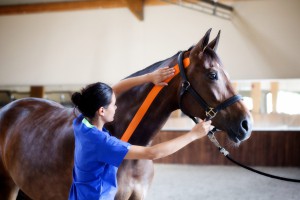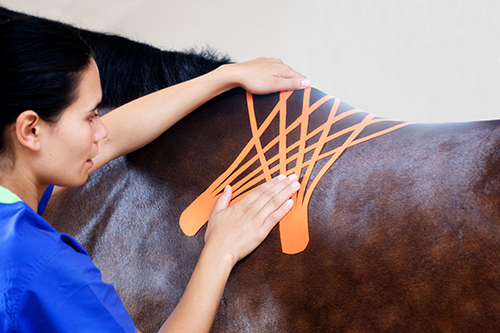Drs. Solange Mikail is a veterinarian, animal physiotherapist, member of the ACVSMR and also a VetkinTape teacher. During the 10th International Congress of the Veterinary Rehabilitation and Physical Therapy (IAVRPT) in Knoxville USA (30 July – 3 August 2018), her poster presentation, on the application of VetkinTape to leg stance abnormalities in foals, was judged best.
Angular position deviation in foals
It happens regularly that foals are born with abnormalities of the legs. Causes may include an incorrect position in the womb, a premature birth, or problems around the birth. It is also possible for a stallion to develop after birth, for example due to problems with the growth plates or a kick from another horse. A foal grows very quickly in the first few months and therefore early treatment of the leg position can have a positive effect. The final result depends on the severity of the position deviation. In addition to conservative treatment, surgical intervention can also be envisaged.
Name of the study
Correction of angular limb deformities in foals using kinesiology taping
Background information:
Kinesiology taping is a treatment technique using elastic orthopaedic tapes. One of the effects that can be achieved with the use of elastic taping is the stabilisation of anatomical structures. Angular position deviation is a well-known problem in foals and the treatment is often surgical. The purpose of the case study is to investigate the efficacy of Kinesiology taping as a treatment method for angular position deviation in foals.
Material and method
Case 1: 30-day-old Magalarga filly foal with a carpus valgus deviation on the right front leg. Case 2: 60 day old Quarter Horse foal with a carpus valgus deviation on the left front leg.
- In both foals, a 20 cm strip of VetkinTape with 30% stretch was applied to the medial side of the affected leg, to support the medial collateral ligament.
- Two 10 cm strips were also applied as an anchor at the top and bottom of the tape to prevent loosening.
- The tape was changed every 5 days and the foals were treated for a total of 15 days.
- The angle of the leg position was then measured on the photos using ImageJ software.
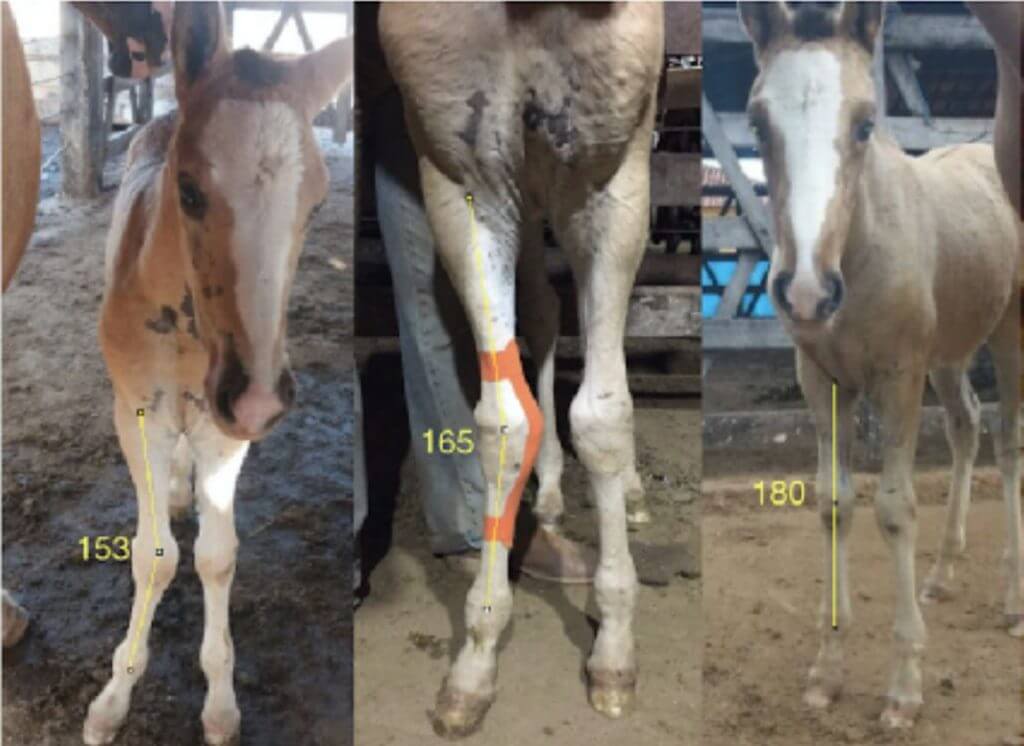
Photo 1: case 1
Results:
In both cases, the angle of the stance deviation improved within 15 treatment days. The stance angle gradually reached an almost normal position from day 1 to day 15. The angle in case 1 changed from 153 to 180 degrees (figure 1) and in case 2 from 162 to 177 degrees (figure 2).
Conclusion:
Kinesiology taping with VetkinTape can be a non-invasive and inexpensive treatment for angular position disorders in foals. Further research is needed. Download the original poster presentation: Kinesiology poster stance deviation foal.
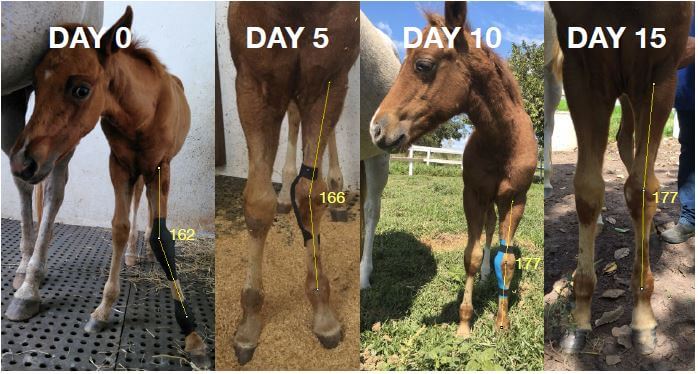
Photo 2: case 2
MTC course for Veterinarians and Veterinary Physiotherapists
At THYSOL Australia it is possible for animal physiotherapists and veterinarians to follow a two-day training in order to learn all the techniques and to be able to apply them in practice. The practitioner must have a good anatomical knowledge of the horse or animal and know where the complaints come from. In this way, you get the best results from the total treatment. For course information, please refer to the course section of our website.
VetkinTape® is used for, among other things:
- Activation of blood and lymph circulation in case of swellings and bruises
- Treatment of stable legs
- Influencing fascial structures
- Treatment of scars
- Tendon injuries and inflammations
- (After) treatment of musculoskeletal injuries
- Improving muscle function (increasing or decreasing tone)
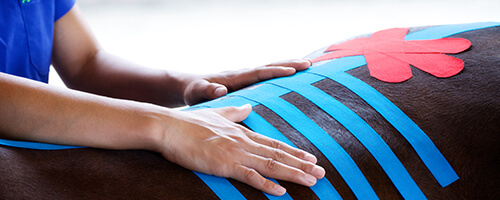
Product properties VetkinTape®:
- 25% stronger adhesive. Latex-free with TÜV quality mark.
- 6 cm wide rolls x 5 metres. 1 cm wider than CureTape®.
- Available in orange, black, red and blue.
- Hypoallergenic, water-resistant and breathable.
- Specially developed for the veterinary market and therefore not suitable for human skin!
Popular products for horse treatment
-
VetkinTape® veterinary tape 6cm x 5m
Bestseller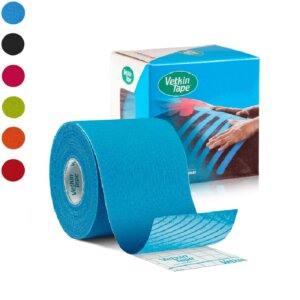 $24.95
In stockSelect options This product has multiple variants. The options may be chosen on the product page
$24.95
In stockSelect options This product has multiple variants. The options may be chosen on the product page -
FASCIQ® Mini Massage Gun
Bestseller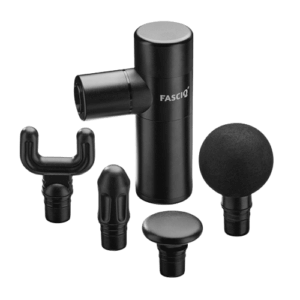 $179.95
In stockAdd to cart
$179.95
In stockAdd to cart -
FASCIQ® IASTM Tool – Large handlebar
Bestseller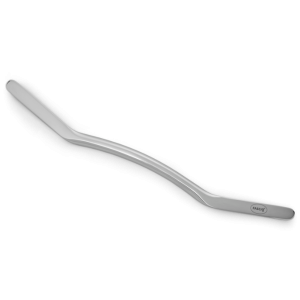 $289.00
In stockAdd to cart
$289.00
In stockAdd to cart -
VetkinTape® Equine Introductory offer
Bestseller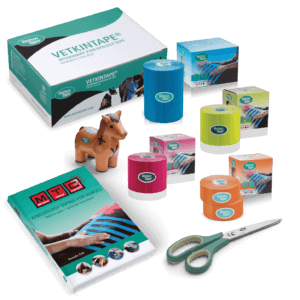 $159.95
In stockAdd to cart
$159.95
In stockAdd to cart
More information:
- Shop VetkinTape® »
- Continue reading about Equine kinesiology tape »
- Check out the VetkinTape® Introductory offer »
- Check out the equine kinesiology taping course»
Please note that applications provided on our website are not clinically proven. All mentioned applications are based on extensive evaluation and case studies with licensed physiotherapists and/or other health professionals.
Attention: Mentioning source is mandatory, when using the content on this page.

